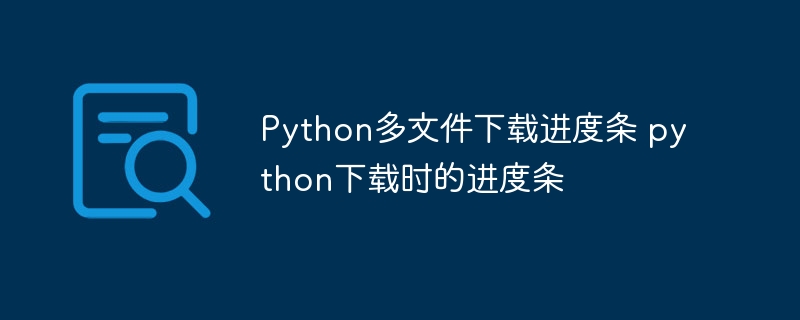python 多线程进度条如何并行(并行.多线程.进度条.python...)
python 多线程可用来实现并行进度条。主要步骤包括:导入 threading 和 time 库;创建 progressbar 类管理进度条;创建线程函数 update_progress 不断更新进度条;创建并启动线程执行更新任务;在主线程中循环获取并显示进度。

如何使用 Python 多线程实现并行进度条
Python 多线程机制使程序能够同时执行多个任务,从而提高效率。在显示进度条时,我们可以利用多线程来并行处理任务,从而实现实时更新进度条。
1. 导入必要的库
import threading import time
2. 创建进度条对象
创建一个 ProgressBar 类来管理进度条:
class ProgressBar:
def __init__(self):
self.progress = 0
def update(self, increment):
self.progress += increment
3. 创建线程函数
创建一个线程函数来更新进度条:
def update_progress(progress_bar):
while True:
time.sleep(0.1)
progress_bar.update(1)
4. 创建线程
创建并启动一个新线程来执行更新进度条的任务:
progress_bar = ProgressBar() thread = threading.Thread(target=update_progress, args=(progress_bar,)) thread.start()
5. 在主线程中显示进度
在主线程中,可以使用一个循环不断获取 progress 属性并显示到屏幕上:
while True:
print(f"Progress: {progress_bar.progress}")
time.sleep(0.5)
示例:
import threading
import time
class ProgressBar:
def __init__(self):
self.progress = 0
def update(self, increment):
self.progress += increment
def update_progress(progress_bar):
while True:
time.sleep(0.1)
progress_bar.update(1)
progress_bar = ProgressBar()
thread = threading.Thread(target=update_progress, args=(progress_bar,))
thread.start()
while True:
print(f"Progress: {progress_bar.progress}")
time.sleep(0.5)
输出结果:
Progress: 1 Progress: 2 Progress: 3 ...
以上就是python 多线程进度条如何并行的详细内容,更多请关注知识资源分享宝库其它相关文章!
